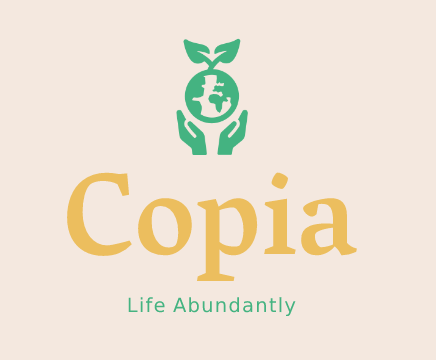Holistic Development and Its Impact on Regenerating Ecosystems
Understanding holistic development
Holistic development involves considering the interconnectedness of various factors in the environment for sustainable growth and regeneration. It focuses on the overall well-being of the ecosystem, taking into account the social, economic, and environmental aspects. This approach aims to create a system that benefits all components and promotes balance and harmony within the ecosystem.
The principles of holistic development
Holistic development encompasses the idea of addressing the interconnectedness of living organisms and their environment for sustainable growth. It involves nurturing the physical, emotional, social, and cognitive aspects of individuals or ecosystems. The principles of holistic development emphasize the need to consider the whole rather than just individual parts, promoting a balanced and interconnected approach to regeneration.
The impact of holistic development on ecosystems
Holistic development considers the interconnectedness of all aspects of an ecosystem. It focuses on maintaining a balance between economic, social, and environmental factors to ensure sustainable growth. This approach recognizes the importance of preserving natural resources, protecting biodiversity, and mitigating the impact of human activities on the environment. Through holistic development, ecosystems can be regenerated, allowing for the restoration of natural habitats, the conservation of wildlife, and the promotion of environmental stability.
Regenerating ecosystems through holistic development
Holistic development focuses on nurturing and enhancing all aspects of an ecosystem, including the environment, society, and economy. This approach considers the interconnectedness of all elements within an ecosystem and aims to address them in a comprehensive manner. By integrating sustainable practices, community engagement, and economic empowerment, holistic development can regenerate ecosystems by promoting biodiversity, improving soil quality, and conserving natural resources. This approach also emphasizes the importance of education and awareness to ensure long-term sustainability and resilience of ecosystems.
Strategies for integrating holistic development and ecosystem regeneration
Holistic development aims to create long-term solutions for both human communities and the natural environment. To integrate holistic development with ecosystem regeneration, consider the following strategies:
Permaculture Design: Utilize permaculture principles to design sustainable human settlements that work in harmony with the surrounding ecosystem.
Community Engagement: Involve local communities in the planning and implementation of holistic development projects, ensuring that their needs and concerns are addressed.
Ecosystem-based Approaches: Implement projects that focus on the restoration and preservation of natural habitats and biodiversity, such as reforestation, wetlands restoration, and habitat conservation.
Education and Awareness: Promote awareness about the importance of ecosystem regeneration and holistic development through education and outreach programs.
Policy Integration: Advocate for policies that support the integration of holistic development and ecosystem regeneration at local, regional, and national levels.
Case studies of successful holistic development initiatives
Case studies have shown that holistic development initiatives can significantly contribute to regenerating ecosystems. For example, the restoration and conservation efforts in the Amazon rainforest have demonstrated a positive impact on biodiversity and natural resources. Similarly, the implementation of integrated farming systems in areas affected by deforestation has not only improved soil health but also helped in re-establishing wildlife habitats. These examples highlight the potential of holistic development in promoting ecological regeneration and sustainable resource management.
Challenges in implementing holistic development for ecosystem regeneration
Implementing holistic development for ecosystem regeneration is often challenging due to various factors. Limited resources and funding can hinder comprehensive and long-term initiatives, while conflicting interests among different stakeholders may lead to resistance and obstacles in the way forward. Additionally, lack of awareness and education regarding the benefits of holistic development can impede community participation and support. Balancing short-term needs with long-term sustainability also presents a significant challenge, as immediate economic concerns may overshadow the importance of regenerating ecosystems for the future. Furthermore, policy and governance issues can create bureaucratic hurdles and slow down the implementation process. Mitigating these challenges requires collaborative efforts, efficient resource management, stakeholder engagement, and a holistic approach to addressing both ecological and societal needs.
The role of community involvement in holistic development
Community involvement plays a crucial role in holistic development as it encourages a sense of ownership and responsibility within the community. It fosters a collaborative and participatory approach to addressing social, economic, and environmental challenges. By actively engaging community members in decision-making processes and development initiatives, it ensures that the needs and priorities of the community are identified and addressed effectively. This involvement can lead to sustainable and inclusive development, as it harnesses local knowledge, resources, and expertise to regenerate ecosystems and promote overall well-being.
The future of holistic development and ecosystem regeneration
Holistic development focuses on considering the interconnectedness of all aspects of an ecosystem. This approach takes into account not just the economic aspect, but also the social, cultural, and environmental factors. Ecosystem regeneration, under the umbrella of holistic development, aims to restore ecosystems to their natural balance. This process involves rehabilitating degraded lands, reintroducing local species, and promoting sustainable land and water management practices. As we look to the future, holistic development and ecosystem regeneration will play a crucial role in promoting sustainable and balanced ecological systems.
Conclusion: The significance of holistic development for regenerating ecosystems
Holistic development plays a crucial role in regenerating ecosystems by emphasizing the interconnectedness of all elements within an environment. It encourages a comprehensive approach that considers the diverse needs of ecosystems and communities, leading to more sustainable and balanced outcomes. By prioritizing holistic development, we can work towards restoring the delicate balance in ecosystems, promoting biodiversity, and creating resilience against environmental challenges. This approach not only benefits the natural world but also supports the well-being of local communities, fostering a harmonious relationship between people and the environment.

